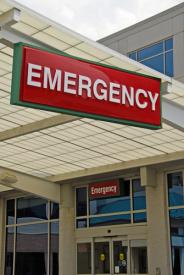Summary: Preventable visits to the Emergency Department are a significant source of waste contributing to the exorbitant costs of healthcare.
Summary: Preventable visits to the Emergency Department are a significant source of waste contributing to the exorbitant costs of healthcare.
Healthcare costs are soaring to uncontrollable levels. One contributing factor is Emergency Department (ED) utilization specifically for preventable visits. Some of these preventable visits are from those individuals deemed as “frequent flyers”. While there doesn’t seem to be a standard definition for this class, they are individuals who present to the ED on a frequent basis. Some statistics indicate the frequency is 5 or more visits per year while others are as high as 10 per year or even monthly. According to one statistic, frequent flyers make up about 20% of the ED population and take up 80% of the costs/resources.
Contributing Factors to Frequent Flyers to the ED
 There is no one single factor that influences frequent flyer use in the ED, but a multitude of factors. One of the major issues is lack of primary care/medical home. Primary care physicians are high in demand and short in supply. There are not enough primary care physicians to adequately treat the ever-growing population. This issue will certainly get worse before it gets better. Certain aspects of the Affordable Care Act such as the creation of Healthcare Exchanges, the expansion of Medicaid, and the Individual Mandate were designed to increase access of care as well as provide affordable care to more individuals. This adds to the already dicey supply/demand issues. Bottom line is we have less primary care physicians to treat more patients.
There is no one single factor that influences frequent flyer use in the ED, but a multitude of factors. One of the major issues is lack of primary care/medical home. Primary care physicians are high in demand and short in supply. There are not enough primary care physicians to adequately treat the ever-growing population. This issue will certainly get worse before it gets better. Certain aspects of the Affordable Care Act such as the creation of Healthcare Exchanges, the expansion of Medicaid, and the Individual Mandate were designed to increase access of care as well as provide affordable care to more individuals. This adds to the already dicey supply/demand issues. Bottom line is we have less primary care physicians to treat more patients.
Primary care, if available has typically had 9-5 hours Monday through Friday. Now if we could control when we need immediate, urgent attention, we might be able to work this around the hours available by our primary care physician. However, the reality is that many ED visits occur evenings and weekends, when primary care is not an option. Many primary care physicians have begun to extend their hours, but we have a long time to go before primary care will be an option 24/7.
Primary care is often not equipped to handle behavioral health issues such as substance abuse, depression, anxiety, and schizophrenia. Unfortunately, the misconception is that all EDs can treat all issues whether they are mental or physical or a combination thereof. Most EDs are actually not equipped to handle complex mental/behavioral health issues unless they are part of a psychiatric hospital. So, the ED has some of the same issues as primary care in terms of being able to treat both the body and the mind.
Individuals frequent EDs for a variety of reasons. Sometimes they are less medical and more of a place of comfort. This is especially true with the homeless population. EDs can provide a place to get out of the elements associated with the streets, provide warmth and comfort, and sometimes just a place to socialize.
Many EDs, especially community hospitals, have to treat everyone that walks through the door, whether or not they are insured and whether or not they have the funds to pay for the visit. This certainly adds to the influx and overcrowding of the ED. For some, this is seen as the only financially viable option.
The Expense of ED Treatment
ED treatment is much more expensive than that of primary care. The ED can be up to 5 times as costly as other alternatives such as primary care, depending upon services provided, location of the hospital, and type of hospital or healthcare system. So, having the right treatment, provided in the right setting at the right time are critical to reducing healthcare expenses associated with the ED.
Possible Solutions
Partnering with primary care is essential. Creating referral relationships with primary care can help to reduce the preventable ED visits. Part of the triage process should involve obtaining primary care information – who the physician is as well as their contact information. If a patient doesn’t have a primary care physician, one should be established. The primary care physician should be notified of the ED visit including diagnosis, treatment and follow-up. If at all possible, the follow up visit should be made prior to discharging the patient from the ED.
Providing education to ED frequent flyers of the community resources available will also assist in reducing the number of visits for this population. Many times, individuals present to the ED because of lack of education as to alternatives to the ED. It is a last resort – no place else to go. There are many community resources available such as urgent care clinics, free clinics, and specific outpatient designated facilities. Knowing what is available is half the battle. The other half is knowing what is deemed an emergency and what is not. The title of this piece – “Would you call 911 for a hangnail” also applies to the ED. Is the instance truly an emergency. Can it be treated by primary care or other outpatient facility? Is it urgent that the treatment occur right now? Can it wait 24 hours when could be seen by primary care? As mentioned above, the cost of ED care is very expensive and is not always the right place for treatment. It should be a last resort when no other alternatives exist. One of the major contributors to ED overcrowding is the number of individuals who visit the ED but could have been seen in another setting.
Creating protocols to flag and educate frequent flyers can be beneficial and should be considered critical. Every time an individual is registered and triaged in the ED, a check should be made to see when they were in your ED. How frequent has the individual visited the ED in the last year? What are the reasons for their previous visits? Have any of the visits been “preventable”? Has there been any follow-up with primary care since their last visit? Once established and flagged as a frequent flyer, efforts should be made to establish primary care as well as provide education as to what constitutes an emergency room visit. It is putting the “emergency” back in the emergency department and utilizing for its intended purpose. The ED should not be a place of shelter, a place of refuge, or a place to just obtain drugs. It should not be used out of convenience but rather as a place of last resort when an emergency truly exists.
On the primary care side, the move is toward patient-centered care or the medical home. This philosophy basically places the patient at the center of his care and requires the primary physician to coordinate care with other providers such as specialists, labs, and radiology. With the medical home movement comes the movement toward accessible health care. This may come in the form of extended hours to evenings and weekend, the ability to schedule appointments online, and many other options designed to make appointments and follow-up more convenient for the patient and moving away from the typical 9-5 Monday through Friday physician practices. One of the main reasons stated for ED visits is that it was after hours and I couldn’t wait to see my primary care physician. Extended hours can certainly go a long way in alleviating the overcrowded EDs, the extremely long wait times, and the costs associated with providing treatment in the ED.
On a final note, care coordination is essential in the ED. Many EDs have added nurses and/or other healthcare professionals to help the frequent flyers to establish the essential relationship with a primary care physician, to educate on the community resources available, and ensure the handoff from ED discharge to outpatient is smooth – everyone on the same page from the ED to the patient to the primary care physician. Many times, this coordination of care involves setting up follow-up appointments post-discharge with the primary care physician or coordinating transportation to the follow-up visit or communicating directly with the primary care physician as to the diagnosis and treatment administered. These professionals serve as liaisons to make sure not only does the patient receive the immediate treatment necessary, but also the long-term follow-ongoing care as well.
So, would you call 911 for a hangnail? Would you go to the ED for a hangnail? Do you need assistance with establishing frequent flyer protocols? Do you need assistance with creating education materials? Do you need assistance establishing relationships with community resources? Do you need assistance with establishing care coordination?
(emergency room visits / shutterstock)







